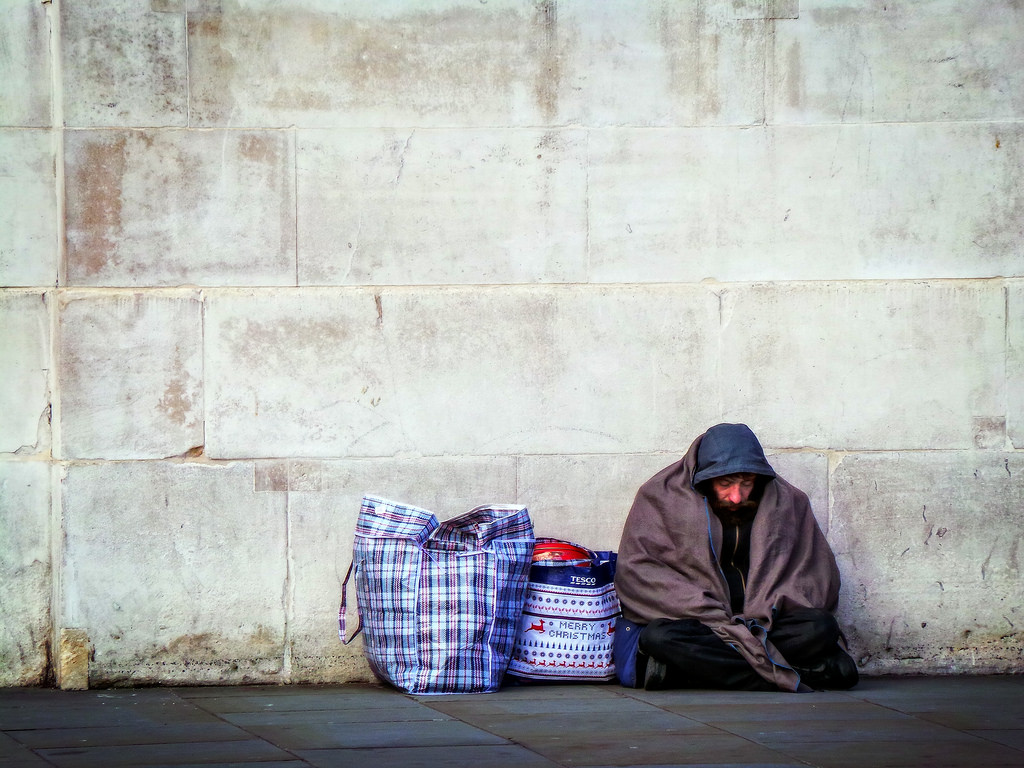After Rick Gentry became chair of the Regional Continuum of Care Council, the board decided to merge with the Regional Task Force on the Homeless. The organization will streamline efforts and perhaps try to lay the groundwork for big public investment in the issue.
San Diego’s been without the leadership, coordination and oversight that have proven crucial in success stories elsewhere. Federal officials have previously zeroed in on San Diego’s lack of collaboration and evaluation of its homeless-serving programs. San Diego’s also relied more on transitional housing, a homeless-serving approach that has largely fallen out of favor with the feds.
If Rick Gentry and other advocates have their way, 2017 will be the year the regional group overseeing efforts to reduce homelessness gets its house in order.
Gentry, who in August became chair of the Regional Continuum of Care Council, said San Diego needs more infrastructure and data to make a significant dent in the problem that’s mushrooming on streets countywide.
“We have a lot of room for improvement and expansion coming up shortly,” said Gentry, who’s served as CEO of the San Diego Housing Commission since 2008.
Among the council’s New Year’s resolutions: Approve a comprehensive plan to address homelessness countywide, merge the council with the Regional Task Force on the Homeless, step up use of data to drive decision-making and hire a new leader with a track record of reducing homelessness elsewhere.
Gentry and other local leaders believe those steps will help San Diego move past its longtime failure to address homelessness in an organized, systematic fashion.
For years, San Diego’s been without the leadership, coordination and oversight that have proven crucial in success stories elsewhere. Federal officials have previously zeroed in on San Diego’s lack of collaboration and evaluation of its homeless-serving programs. San Diego’s also relied more on transitional housing, a homeless-serving approach that has largely fallen out of favor with the feds.
Regions that were quicker to develop structured systems to aid the homeless and to move away from transitional housing programs that provide services before housing have reported more dramatic drops in homelessness. San Diego remains home to the nation’s fourth-largest homeless population.
So Gentry and others want to lay the foundation for a stronger regional push to end homelessness – and perhaps, a future housing ballot measure similar to successful ones in Los Angeles and the Bay Area focused on addressing San Diego’s rising street homelessness.
“I think we’ve got the potential to show that the disconnect is one of the need for additional resources but we’ve got to make that point and sell it to the public,” Gentry said.
The Regional Continuum of Care Council helps dole out $18 million annually in federal funds but lacks the formal structure to administer grants on its own. The region doesn’t have an up-to-date blueprint on how to address homelessness and has for years largely relied on an annual point-in-time census taken one morning in January to shape local programs and initiatives.
Gentry expects change this year.
The council is set to vote this month to formally merge with the Regional Task Force on the Homeless, best known for its work on the annual point-in-time count. The combined organizations will be dubbed the Regional Task Force on the Homeless.
Tom Theisen, the current board chair of the Regional Task Force on the Homeless, said Task Force Executive Director Dolores Diaz approached the council about merging with a pitch that the combined organizations could do more to advocate for homeless San Diegans.
Gentry said the merger will provide far more institutional stability and supply the newly reconstituted group with staffers to work on regional homelessness efforts, including a new executive director.
The group expects to soon kick off a national search for a leader.
Whoever takes that role will benefit from more data on San Diego’s homeless population than the region’s had historically.
The Regional Task Force on the Homeless recently released an analysis documenting that more than 17,550 people used homeless services last year – and that half were newly homeless.
Another 40 percent had been aided by homeless-serving programs but remained on the streets.
Gentry believes the new data can help the region better understand the needs of its homeless population and shift programs accordingly.
“We’ve done some good stuff but I’m not sure that we’ve known enough about the nature of the problem to get in front of it, and that’s what I hope we’re able to do here,” Gentry said.
The newly released data will also assist a yet-to-be announced outside contractor in developing a regional agenda for preventing and ending homelessness in San Diego. A final version is expected to be approved this summer.
Outspoken local advocates including Theisen and Michael McConnell, who runs the Homelessness News San Diego Facebook page, say increased data-crunching and regional planning have been crucial to successful ballot measure campaigns and dramatically reducing homelessness elsewhere.
“Those other communities clearly have put together a plan to actually end homelessness in their communities,” Theisen told me this fall. “We need to do the same thing here in San Diego before we can go to the voters and the business community and ask them to support this.”
Potential ballot measure aside, Gentry believes the group’s 2017 moves could pave the way for major reductions in homelessness.
He’s looking at success stories in places like Houston, where street homelessness has fallen more than 70 percent the past five years.
“I think that with focused leadership here over the next four years or so we should be able to accomplish something very similar here,” Gentry said. “It’s doable.”
[divider] [/divider]





